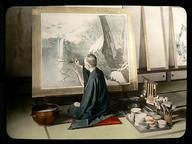Quiz Answer Key and Fun Facts
1. This is a patterning and dyeing process practiced in Indonesia wherein the designer employs wax to permanently imprint a design on fabric. What is this popular dyeing process called?
2. Which of these mammals is associated with good fortune in China, and is depicted symbolically so in Chinese art?
3. The Buddha is often represented in Asian art sitting underneath a tree. Under which tree will you often find the Buddha meditating?
4. An item frequently found in ancient Chinese graves, it is circular with a hole in the center. What is the term for this item?
5. Bodhisattvas are individuals of the Buddhist faith who have achieved enlightenment but have chosen to remain on Earth to help others. They are ubiquitous in Buddhist art, being found in places as diverse as Sri Lanka, Vietnam and Japan. Speaking of Japan, what is the Japanese term for a Bodhisattva?
6. Another omnipresent symbol to be found in Asian art, this plant represents resistance and endurance...name it!
7. For the inhabitants of a certain Indonesian island life is religious art and there are plenty of places to practice, the island has around 20,000 temples, the largest being Besakih. What is this primarily Hindu island called?
8. Here's an easy one...what is the name for a dwarf Japanese tree?
9. What is the primary shrine and ordination hall called in a Thai temple compound?
10. If you were looking at ancient Chinese vessels called dings, lis, gus and zuns, you would be viewing items made from what metal alloy?
Source: Author
thejazzkickazz
This quiz was reviewed by our editing team before going online.
Any errors found in FunTrivia content are routinely corrected through our feedback system.
